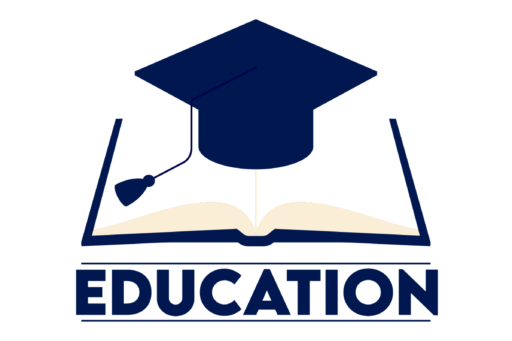Learning Theories and Approaches Understanding how people learn is essential for creating effective educational systems, personalized instruction, and meaningful learning experiences. “Learning Theories and Approaches” explores the various models that explain the processes involved in acquiring knowledge and skills. These theories provide a foundation for educators, trainers, and learners alike, informing best practices in schools, universities, workplaces, and beyond. In this blog, we’ll cover the most prominent learning theories, their implications, and modern approaches to effective teaching.
1. Introduction to Learning Theories
Learning theories are frameworks that explain how knowledge and skills are acquired, processed, and retained. They attempt to answer questions about the nature of learning, such as: “Is learning an internal cognitive process or a response to external stimuli?” and “How does learning differ across developmental stages?” Broadly, learning theories can be classified into three categories: behaviorism, cognitivism, and constructivism, each emphasizing different aspects of the learning process.
2. Behaviorism: Learning as a Response to Stimuli
Key Principles of Behaviorism
Behaviorism, one of the earliest learning theories, posits that learning is a result of direct interactions with the environment, specifically through stimulus and response. Behaviorists focus on observable behaviors and consider learning to be a change in behavior due to reinforcement (rewards) or punishment. The work of psychologists such as John B. Watson and B.F. Skinner laid the foundation for behaviorist theory.
Applications of Behaviorism
- Classroom Management: Reinforcement strategies, such as praise and rewards, can encourage positive behaviors, while consequences discourage negative behaviors.
- Skill Training: In fields requiring repetitive skill acquisition (e.g., athletic training), behaviorism can help build automatic responses through practice and reinforcement.
Limitations of Behaviorism
Behaviorism’s focus on observable actions has been criticized for neglecting the role of internal mental processes. Critics argue that learning involves more than just responding to external stimuli and that understanding cognitive processes is essential.
3. Cognitivism: Learning as an Internal Process
Key Principles of Cognitivism
Cognitivism emerged as a response to behaviorism, emphasizing mental processes rather than external behaviors. According to cognitivism, learning is an active, internal process involving memory, perception, and problem-solving. Prominent cognitive theorists, such as Jean Piaget and Jerome Bruner, introduced concepts like schema (mental structures for organizing knowledge) and the importance of developmental stages.
Applications of Cognitivism
- Problem-Solving Skills: Cognitivism supports strategies that encourage critical thinking and problem-solving, such as concept mapping and brainstorming.
- Individualized Instruction: By considering cognitive development stages, educators can tailor lessons to students’ age and mental abilities, enhancing comprehension and retention.
Limitations of Cognitivism
While cognitivism considers internal mental processes, it can sometimes overlook the impact of emotions, social contexts, and cultural influences on learning. These limitations have led to the development of other theories that incorporate a broader range of factors.
4. Constructivism: Learning as a Constructed Experience
Key Principles of Constructivism
Constructivism argues that learning is an active process in which learners construct their own understanding based on personal experiences. Developed by theorists like Lev Vygotsky and Jean Piaget, constructivism emphasizes that knowledge is constructed through social interactions and problem-solving. Learning is viewed as a transformative process rather than the mere absorption of information.
Applications of Constructivism
- Collaborative Learning: Group projects and discussions encourage students to build knowledge together, allowing them to learn from diverse perspectives.
- Experiential Learning: Hands-on activities, simulations, and real-world applications help students actively construct their understanding.
Limitations of Constructivism
Constructivist methods may not always be feasible in traditional classrooms due to time constraints or standardized testing requirements. Additionally, they may place significant demands on teachers to facilitate and guide learning effectively.
5. Social Learning Theory: The Influence of Social Context
Key Principles of Social Learning Theory
Social Learning Theory, developed by Albert Bandura, bridges behaviorism and cognitivism by emphasizing the role of observation, imitation, and modeling in learning. According to Bandura, people can learn by observing others, particularly when they observe behaviors that are reinforced.

Applications of Social Learning Theory
- Modeling Desired Behaviors: Teachers, parents, and role models can shape learners’ behaviors by demonstrating positive actions and providing encouragement.
- Peer Learning: Group activities and peer tutoring can foster learning through social interaction and shared experiences.
Limitations of Social Learning Theory
This theory’s reliance on observational learning may be less effective when learners lack appropriate role models. Furthermore, the theory does not fully address how cognitive processes impact learning.
6. Modern Approaches to Learning
In recent years, traditional theories have evolved, and new approaches have emerged that integrate technology, neuroscience, and a holistic view of learners. Below are some modern approaches that blend aspects of established theories:
1. Connectivism: Learning in a Digital Age
Connectivism, developed by George Siemens, reflects the impact of digital technology on learning. This theory posits that learning is a networked process, involving connections with others, resources, and digital platforms. Learners gain knowledge by navigating complex information networks, using technology to access, evaluate, and share knowledge.
- Applications: Online forums, social media platforms, and digital collaboration tools enable learners to connect, share insights, and engage in self-directed learning.
2. Experiential Learning
Experiential Learning Theory, popularized by David Kolb, emphasizes learning through experience and reflection. Kolb’s learning cycle involves four stages: concrete experience, reflective observation, abstract conceptualization, and active experimentation. This approach encourages learners to engage directly with the subject matter.
- Applications: Internships, labs, fieldwork, and project-based learning all support experiential learning, allowing students to connect theory with practice.
3. Multiple Intelligences Theory
Howard Gardner’s Theory of Multiple Intelligences suggests that intelligence is not a single ability but rather a range of cognitive capacities. Gardner identified eight intelligences, such as linguistic, logical-mathematical, musical, and interpersonal intelligence.
- Applications: Educators can use multiple intelligences to design diverse learning activities, catering to various strengths and preferences among students.
7. Choosing the Right Approach: Tailoring Learning to Individual Needs
Selecting a learning theory or approach depends on the learner’s needs, context, and goals. While behaviorism may be effective for skill-based training, constructivism is more suited to environments emphasizing critical thinking and exploration. In modern classrooms, educators often combine elements from different theories to create a balanced approach that meets diverse learning styles and objectives.
Blended Learning
Blended learning combines in-person instruction with digital resources, allowing for a flexible and personalized learning experience. This approach is gaining popularity in both traditional classrooms and workplace training, as it can accommodate various learning styles and offer self-paced learning options.
8. The Future of Learning Theories and Approaches
As our understanding of neuroscience, psychology, and technology continues to grow, so too will learning theories and approaches. The integration of artificial intelligence and data analytics is shaping adaptive learning platforms that respond to individual progress and offer customized support. Moreover, an increasing focus on lifelong learning underscores the importance of developing approaches that accommodate learners at all stages of life.

Conclusion
The field of learning theories and approaches is diverse and continually evolving. From the foundations of behaviorism and cognitivism to modern concepts like connectivism and experiential learning, each theory offers unique insights into how we learn. For educators, understanding these theories provides a toolkit for designing effective, inclusive, and flexible learning experiences. By considering the needs and preferences of learners, we can harness the strengths of various theories and approaches to foster a learning environment that is engaging, enriching, and empowering.

